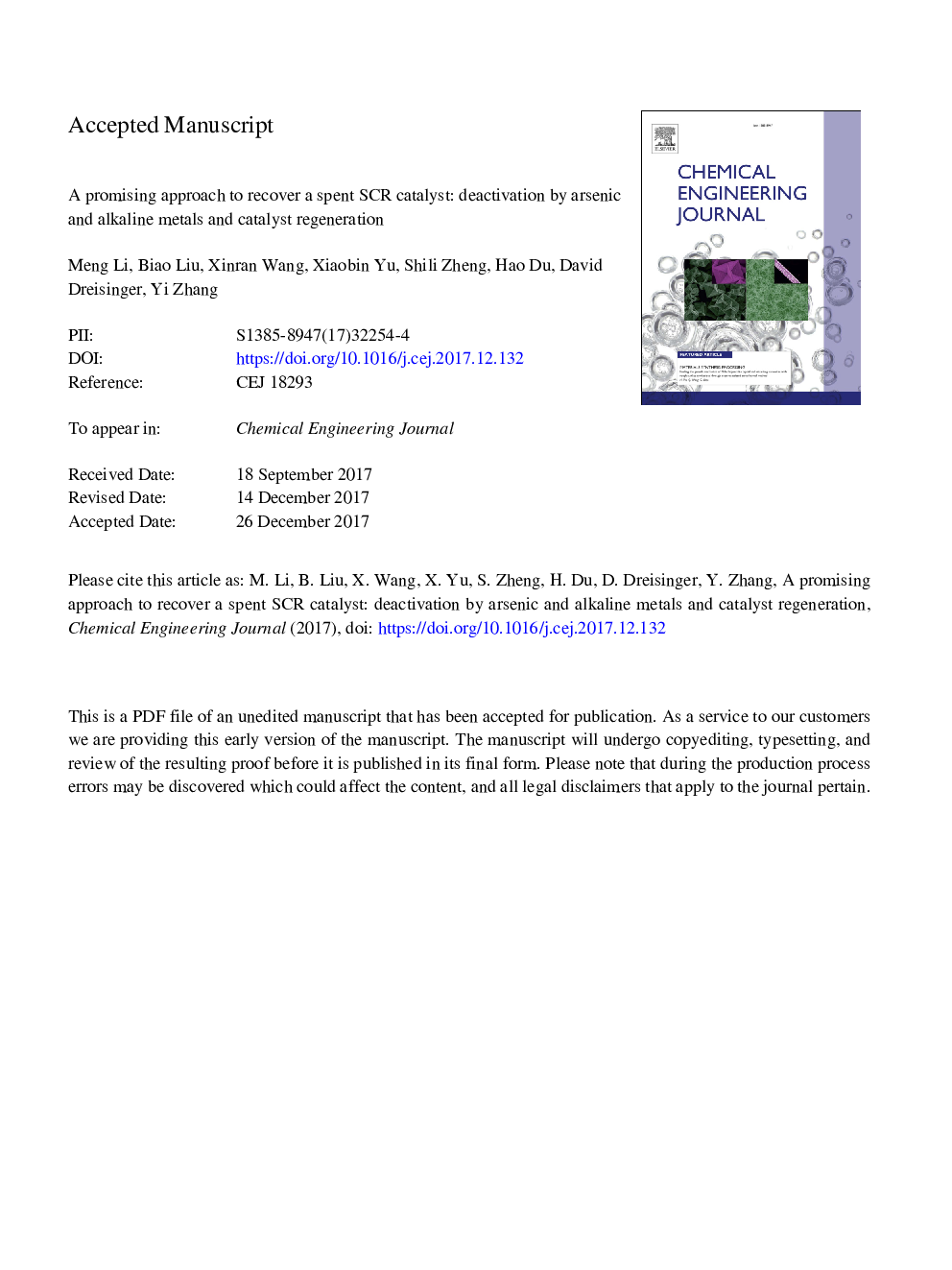| Article ID | Journal | Published Year | Pages | File Type |
|---|---|---|---|---|
| 6579692 | Chemical Engineering Journal | 2018 | 20 Pages |
Abstract
A large amount of spent selective catalytic reduction (SCR) catalyst is generated annually. The spent SCR catalyst is poisoned by arsenic and alkaline metals. These spent catalysts also contain substantial amounts of heavy metals and are therefore considered as hazardous solid waste. In order to decontaminate the catalysts from As, K and Na poisoning, recover the valuable metals (V and W) and regenerate the catalysts, an efficient and green advanced oxidation process (AOPs) named oxidative ammonium bicarbonate leaching (OABL) at moderate temperature and ambient pressure was developed. The effect of the leaching parameters on the V, W, As, Na, K and Ti leaching efficiencies was investigated. The mechanisms of V5+ and W6+ species extraction process were investigated. Furthermore, the mechanism of extraction of the low valent As3+ was studied by ESR and a V4+ triggered Fenton-like reaction was proposed. The crystal structure of the catalyst substrate anatase (TiO2) was not affected by the leaching process. After impregnation with active components, the activity of the regenerated SCR catalyst was close to the level of the fresh catalyst with an NO conversion of 91% at 400â¯Â°C. Therefore, this work has introduced a new method for efficient regeneration of the spent catalyst.
Related Topics
Physical Sciences and Engineering
Chemical Engineering
Chemical Engineering (General)
Authors
Meng Li, Biao Liu, Xinran Wang, Xiaobin Yu, Shili Zheng, Hao Du, David Dreisinger, Yi Zhang,
